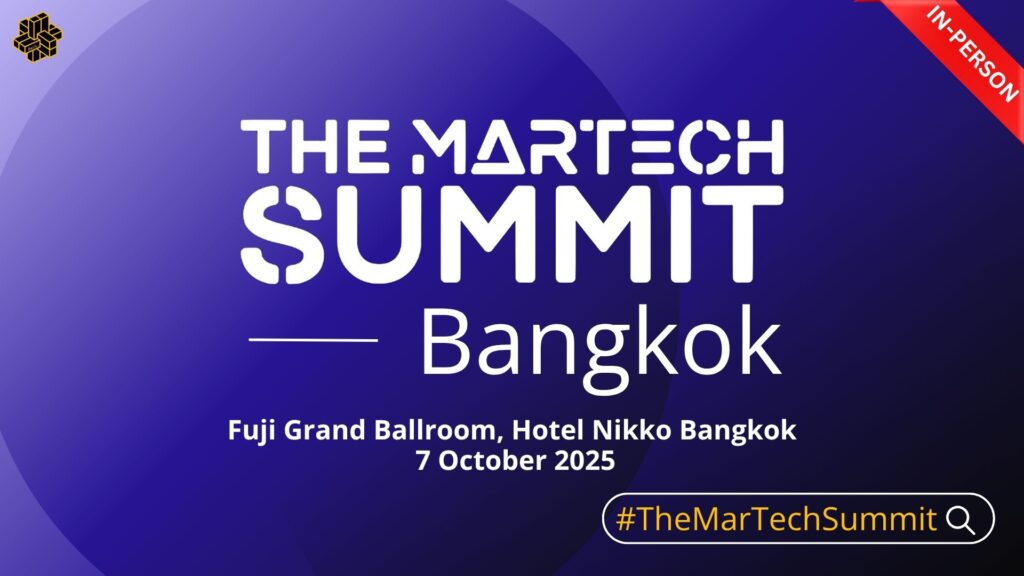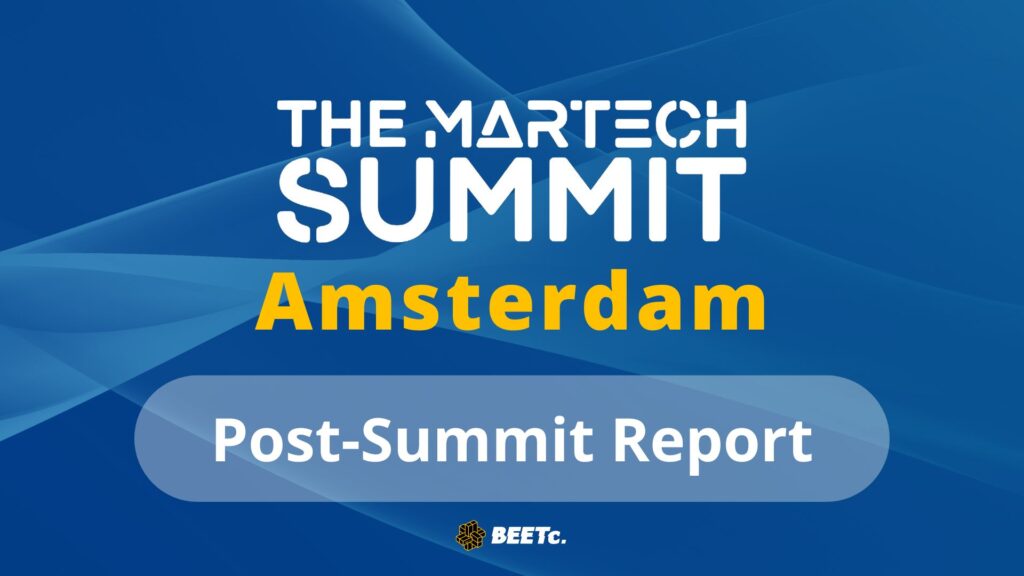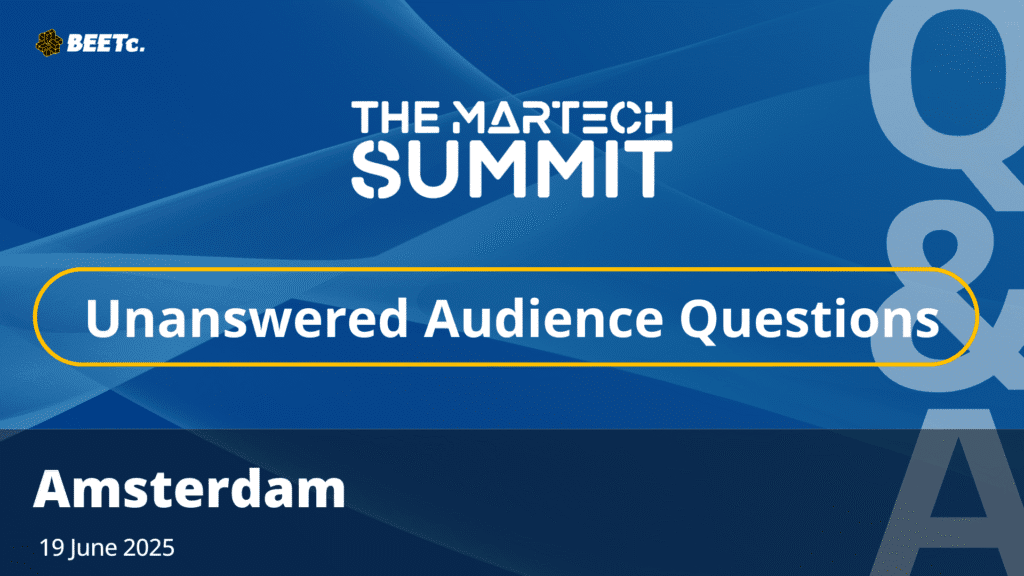
Written by Lev Cribb from WebinarExperts.com
How Modern Events Evolution Is Happening Right Now
By comparing B2B events pre-pandemic and post-pandemic, we can see some significant differences in event formats and execution. Having gone from mostly in-person events to suddenly running only virtual events, Covid has changed how we think about modern events. However, while events appear to have changed quite significantly, we also see organisers going back to “business as usual” when it comes to running events, now that restrictions have been lifted.
Is this surprising, given how much time we spent learning about how to run virtual events? Or were events always going to revert back to what we know and are comfortable with? Are organisers missing out on opportunities to reach and engage wider online audiences with modern event formats? Or are audiences voting with their feet instead of their mouse buttons, by lining up at physical event venues?
WebinarExperts have identified five stages of evolution for modern events. Which stage are your events at? And how do you take the next step on this journey? Are you trusting in the “old faithful” event format or are you continuing on the path set for us by Covid restrictions? What are the risks and benefits of one over the other? And are you struggling to combine multiple formats (in-person, virtual, hybrid) to satisfy your audience’s requirements?
In this post…
In this post, we will talk about how modern events are evolving and how Covid has helped and hampered their evolution. We look at whether virtual events delivered the holy grail or whether they were a waste of time. We look at why some events are reverting to in-person only, while others have adopted virtual and hybrid event elements. We look at audience preferences versus event teams’ preferences and investigate whether these actually match up. And we will look at the five stages of event evolution, which you can refer to and check where you are on your event format journey.
Online events started in the late 90s. Initially, in the form of webinars and later as fully-fledged virtual events. Obviously, in-person events have been around for as long as humans have gathered. Before Covid, physical and digital events existed alongside each other, sometimes being combined into hybrid events. Yes, hybrid events were a thing prior to Covid, but more often than not hybrid events were the domain of internal / employee events, such as All-hands and Townhall events.
Covid restrictions all but eradicated physical events during 2020 and 2021, with organisations globally witnessing the rise of the virtual event. But what about post-Covid events? What can we expect, how should we approach events going forward, what are our audience’s expectations, and what have we learned during Covid?
Read on as we explore the five stages of event evolution, provide a practical guide to modern events, and highlight which opportunities are still available to be taken advantage of.
The Five Stages Of Modern Events Evolution
Stage 1: In-person Events (from the beginning of humankind)
In-person events have been around forever and are loved for many reasons, i.e. social interaction and engagement, deal-making, relationship building, afterparties etc. In-person events appeal to people’s innate social needs and preferences. But they can also be expensive, time-consuming, difficult to scale, and ineffective when it comes to gathering measurable, meaningful data and insights from attendees. How do we know who stayed for how long, engaged with certain aspects of the event, and actually paid attention when they did engage? How do we capture audience questions and ensure these can be tracked against the attendee’s profile in our CRM system? How do we know when they abandoned the event and what may have caused them to leave early? How do we create trends and insights on detailed metrics from across the entirety of our in-person event audience?
Yet despite these questions, in-person events have many benefits. Not least because they are a powerhouse for brand awareness and creating a significant moment in time. From an audience perspective there are also benefits, especially around the accessibility of experts, concentrated content availability, as well as personal and professional side-conversations available at in-person events.
Pre-pandemic, in-person events rarely extended into a virtual component. Certainly not in real-time and live. On occasion, sessions were recorded and distributed as a follow-up, but a timely turnaround of these assets tended to be lower in priority than delivering the event itself. With the dominance of virtual events during the pandemic, the question that comes to the fore is “Is the traditional in-person event format still the best format for your organisation and audience?”
Many organisations have come to realise (and appreciate) the value virtual event formats bring to their organisation, as well as the target audience. Read more about this in the next section (Stage 2: Virtual Events).
Stage 2: Virtual Events (from the late 90s onwards)
The first virtual events, perhaps somewhat surprisingly, started in the late 1990s, but really started becoming more mainstream in B2B around 2010. If you consider webinars as (small) virtual events, they became mainstream around five years earlier than their bigger cousins. In reality, and taking webinars out of the equation, virtual events didn’t really go full mainstream until 2020 when the Covid pandemic restrictions made it impossible to meet in person. [Watch our “How To Take Your Events Online” Interview Video]
In a way, that is remarkable because virtual events provide significantly more insight into user attendance and behaviour compared to their in-person counterparts. However, the human preference for real-world and real-time interaction outweighed the benefits of virtual events for a long time. This, combined with a perception and fear of technological reliability issues (unwarranted or not) meant virtual events existed only at a lower level of priority until 2020. But exist they did, and they existed alongside in-person events – usually in specialist sectors and applications such as HR and Recruitment, Investor Relations, Trade Shows, and Internal Communications.
This changed when Covid restrictions took hold globally. Marketing and event managers had to pivot in real-time to adjust to the new normal (a time perhaps many would rather banish into the past). A growth in webinar volumes was the quickest to observe, due to their simplicity and more flexible nature. But larger conferences and events soon began to take place virtually. These virtual events picked up where physical events had left off.
Because virtual event experience was limited at the start of the pandemic, event organisers would often opt to deliver online content in the same format as during a physical event. As a result, virtual events were delivered in the way an in-person event would have taken place. While this was a natural instinct and, in the absence of better guidance, became a regular occurrence, it did also lead to virtual events falling short of their potential to engage audiences. Online audience preferences were often not met and engaging audience experiences weren’t being created.
As a result, phrases such as “Digital Fatigue” became commonplace. But WebinarExperts also observed very positive feedback from audiences and organisers where virtual events had been adjusted to meet the online audience’s expectations for high-production value and format adjustments. For this reason, the term “Bad Digital Fatigue” would be more appropriate, as well-planned and delivered digital events have achieved great results and audience satisfaction.
Ultimately, in-person events and virtual events have different requirements, as well as different strengths and weaknesses. Read “Stage 3: Hybrid Events” to learn more about how, and whether, Hybrid Events provide a solution.
Stage 3: Hybrid Events
When an end to Covid restrictions was in sight, the attention turned to Hybrid events. If you recall, we had seen Hybrid Events prior to Covid, especially for internal events. However, this time the prediction (or at least assumption – including our own here at WebinarExperts) had been that virtual events elements would join forces with in-person events to create a more ubiquitous hybrid event format.
The declared goal was to combine what was good about in-person events with the good aspects of virtual events, to unify them into a new single hybrid event format. The technology existed and had been proven during the pandemic, but uncertainties remained over future Covid restrictions. The logical next step was to run hybrid events.
But the prospect (and pent-up desire) of meeting in person again was only the first stumbling block in the wider roll-out of hybrid events. Event managers across the globe, who had focused their efforts on virtual events and other activities for two years, were tasked with re-launching the in-person experience. In many cases, this was on the backdrop of high expectations and shorter than expected event planning lead-times (both from organisational leadership, as well as the target audience).
As a result, the desire and ability to also plan for a seamlessly integrated virtual element to create a successful hybrid event was – in many cases – a step too far and ambitious. The prospect of not making the first big post-pandemic event a huge success, by being distracted or diluted by what was seen as a non-essential (or undesired) virtual component, was often seen as a career-limiting factor. Combined with the perception of digital fatigue, it spelled the untimely end for hybrid events as the dominant post-pandemic event format.
However, what could be observed was a marked increase in production value for those events that did opt for a hybrid format. The King is dead – long live the King! Almost imperceptibly, organisations had adopted best practices and learnings from virtual events and applied them to hybrid event solutions [Watch our “How To Make Hybrid Events Work” video]. Improved metrics, increased insights, reduced budgets, as well as (very importantly) audience preferences to reduce travel led organisations to stick with hybrid events where they made sense. This increase in production value, combined with attendee preference to attend online dispelled the perception of “digital fatigue” and replaced it with “bad digital fatigue”, i.e. a view that attending a low-production value online event portion was undesirable, but attending a well-produced and high production value online event was desirable (perhaps even the preferred option).
This change in behaviour and preference, combined with increased and improved insights from digital events, meant that the virtual event component was not dead after all. It was here to stay both in a hybrid as well as a pure-play virtual event format.
Read the next section (Stage 4: In-person and Virtual Events – Better Together) to discover how events continue(d) to evolve, with in-person and virtual event formats becoming symbiotic for a more beneficial combined result, but without the challenges of running more complex combined hybrid event.
Stage 4: In-Person and Virtual Events – Better Together for Modern Events
While the trend towards hybrid events didn’t materialise in the way it was anticipated after the pandemic, a different trend did begin to emerge. Marketing teams and audiences had enjoyed a range of benefits offered by virtual events. Yet hybrid events appeared not to be the solution. In this conundrum, the question was how to retain the benefits of virtual, while also returning to in-person events.
As a result of the pandemic, the benefits of successful and engaging virtual events had been fully established, and services providing the support and execution had become accessible (e.g. through WebinarExperts). In-person and virtual events had become established as successful formats in their own right, and each had loyal audiences. The recognition that both of these two audiences should be acknowledged and served equally was beginning to become prevalent. The logical next step was to combine virtual and in-person events into a different format, in order to benefit equally from both instead of foregoing one of these.
The solution materialised in the form of running in-person and virtual events that were well-aligned, but with separate timings. This may sound obvious and perhaps somewhat underwhelming, yet it was something rarely seen before the pandemic. It is not a return to Stages 1 and 2. Instead, the two event formats were planned with each other in mind, allowing for the same content coverage, but with distinct content experiences to meet the requirements and preferences of online and in-person audiences.
This was a very real departure from the early-stage virtual events that took place during the start of the pandemic. If you recall, these early virtual events had often been run just like in-person events, without adjustments to allow for the difference in how content and audience engagement works online and how the audience prefers to consume this content.
Instead, the symbiotic “better together” approach of running modern events in an in-person and in a virtual format has a common DNA, while being executed in different formats at different times. Spacing the two events a month apart allows for messaging, content, promotion, and speakers to be distinct from each other, while still benefitting from being based on the same foundations. Spacing these events further apart would create a potential conflict with other marketing and campaign requirements or result in reduced engagement and interest from the target audience.
While both event formats and audiences have different requirements, their common DNA allows for adjustments to be made in an easier and less time-consuming way, without having to duplicate efforts for two distinct events. This is the key difference to events that were planned and delivered during Stages 1 and 2 covered above. In effect, the learnings and experience gained during the pandemic has allowed organisations to advance to Stage 4, instead of running these event formats in disjointed isolation.
But there is more. One more stage of evolution for modern events to achieve higher impact and effectiveness from virtual and in-person events. Read the next section (Stage 5: In-person and Virtual Events – Fully Integrated) for more information.
Stage 5: In-Person and Virtual Events – Fully Integrated for Modern Events
Sharing common DNA between in-person and virtual events allows organisations to benefit from each distinct format, while not creating a disadvantage for online or in-person portions of their target audience. It also creates a more efficient way of planning content beyond just one moment in time. However, it does not account for an integration between the two events, the content that is created, and the audiences they engage. While aligned, they lack connection unless this is proactively planned for and implemented.
What benefits does this integration provide? The short answer is: a whole range. Audiences may have their preference for in-person or online events, but these preferences can (and do) change. An in-person attendee may wish to re-watch content at a later date, or may have missed sessions due to an event content track scheduling conflict. The ability to attend again in a different format (i.e. in-person or online) not only increases audience satisfaction and engagement, but also audience data insight for organisers. Both the metrics and the additional audience engagement compound, which increases the time an audience is exposed to your content. This, in turn, lays the foundations for greater audience loyalty for the content your organisation provides.
In addition, the ability to cross-promote between digital and in-person events helps to drive live and on-demand attendance, as well as overall audience reach. Each increase in any of these metrics creates a lower cost per attendee for your events, as well as increasing the likelihood of contributing to an improved buyer journey and pipeline generation.
The increase in available metrics also allows for better profiling of the audience, which in turn lays the foundation for improved ongoing engagement through lead nurturing. More insight leads to more accurate and relevant targeting, which in turn leads to better engagement – and so on.
More exposure to your content, from attendees who consumed more of your content, also leads to better content recall and therefore your organisation is more top of mind than the competition. Every minute spent viewing your content is a minute less spent viewing competitors’ content.
When there is a focus on integrating the two event formats, there is also a focus on upcycling content, rather than recycling it. What does this mean? When in-person and virtual events are well aligned and integrated, the content from the in-person event is not just recycled as a recording for the virtual event (or vice versa). Instead, it is upcycled to fit the event format by re-delivering it live with the appropriate audience and their requirements in mind. The content plays to the audience’s preferences and the event format’s strengths. The result is increased engagement, more insights etc. It becomes a virtuous circle.
The integration can also take a significant step further, by connecting with wider integrated marketing campaigns and activity. Events (in-person or online) become a central touchpoint for targeted audience journeys and engagement at scale. This approach is based on long-term visibility and campaign activity planning. With enough time and foresight, a global and integrated approach can lead to an always-on marketing engine that drives 24/7 engagement with comprehensive, connected, and holistic data insights.
While this Stage 5 approach requires proactive planning, its efficiencies mean there is less overall planning (and more benefits) involved than if two standalone events are planned and executed separately (see Stages 1 and 2). With the right approach, mindset, and forward-looking strategy your organization can evolve its events to Stage 5 too. Not sure? Want to talk about it? Need some further guidance? Get in touch today. WebinarExperts will help you make it happen.
Summary
Never have we seen more evolution in events than between 2020 and 2022. The industry and its technology tools have had to adjust and grow like never before, which has had heads spinning. As a result, traditional event formats have evolved into modern event formats.
Across five stages, events have covered in-person, virtual, and hybrid formats before rising like phoenix from the ashes to emerge as a newly formed partnership between in-person and virtual events in stages four and five of this evolution.
This symbiotic “better together” approach between in-person and virtual events has ushered in a new age of modern events, which has taken learnings from the pandemic and raised the bar for all audiences.
As a result, organisers get deeper insights and gain stronger audience loyalty and satisfaction. Therefore, reverting to how events were run pre-pandemic has become counter-intuitive and counter-productive. Organisations who evolve their events along the five stages described in this post lay the long-term foundations for improved audience experience and engagement, as well as event success.
Thank you for reading this article!
Check out Lev Cribb’s LinkedIn Profile and find out more about WebinarExperts.com
This article was orginally posted at: https://www.webinarexperts.com/latest-publications/modern-events-are-digital-and-in-person/













